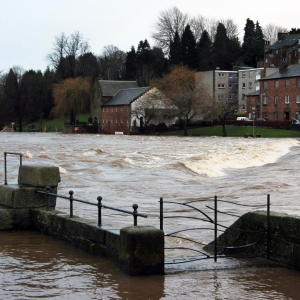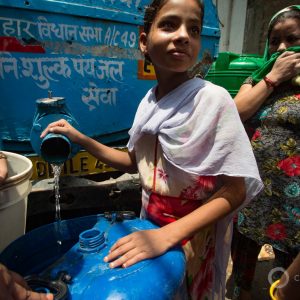Federal Water Tap, March 2: Breaching Snake River Dams Not Preferred Option in Columbia River Review
The Rundown
Federal agencies do not recommend breaching four lower Snake River dams to help salmon. The EPA unveils a water reuse plan. The Bureau of Reclamation grants permanent water delivery contracts to California cities and irrigation districts. Federal regulators tell a California water district to begin draining a reservoir that is at risk of failure in a severe earthquake. House Democrats introduce an environmental justice bill. The GAO recommends better tracking of cybersecurity preparedness. The CDC reports on a fatal case of Legionnaires’ disease that was contracted from home plumbing. The EPA’s draft risk assessment for the solvent TCE finds no unreasonable risk to the natural environment. And lastly, the defense secretary tells Congress to expect a report soon on the military’s PFAS response.
“There has been a so-called water sub-cabinet throughout this administration, and I think they’ve done an incredible job of eliminating stove pipes within the federal agency. And if anything else that is probably a hallmark of this president: cut through the red tape, get going, and deliver results.” — David Bernhardt, the Interior secretary, introducing a federal plan to spur water reuse.
“Learn how to use it, and use it, and use it, and reuse it.” — Sonny Perdue, the secretary of agriculture, speaking at the same event.
By the Numbers
15 percent: Initial water delivery, as a percent of a full allocation, that farm districts in California south of the Sacramento-San Joaquin delta are projected to receive this year from the federal Central Valley Project. Farm districts north of the delta have an initial delivery of 50 percent of their allocation. The numbers are low because initial estimates are often conservation and California has had a dry winter, with just half of normal precipitation and almost none in February. (Bureau of Reclamation)
News Briefs
Columbia River Review
After a multi-year review of dam operations in the Columbia River watershed, three federal agencies determined that the most controversial option — removing an earthen section of four dams on the lower Snake River, a process called breaching — is not their preferred option for protecting endangered salmon while also satisfying other industries that use the watershed.
Ordered by a federal judge because previous operating plans were not adequately protecting salmon, the draft review evaluated six options and their effect on hydropower, fish and wildlife, navigation, native tribes, recreation, flood control, and water supply.
The option that the agencies selected does not include breaching dams, which was the preferred option for several tribes in the region, but it does increase the amount of water spilled over dams in the spring. Spilling water — instead of directing it through a dam’s turbines — decreases hydropower output, but it also decreases fish deaths.
The agencies that conducted the review were the Army Corps of Engineers, Bonneville Power Administration, and Bureau of Reclamation.
Public comments on the draft review are being accepted through April 13.
Feds: Drain the Lake
Federal regulators told a municipal water district that serves Silicon Valley to begin draining its largest reservoir by October 1 because it is a public hazard if an earthquake hits and the dam fails, the Mercury News reports.
Anderson Dam sits along Calaveras fault, where a 6.6 magnitude earthquake could cause the structure to fail and threaten the lives of thousands of people downstream, according to an engineering analysis.
Local officials are looking at securing temporary water supplies such as from groundwater basins while the dam is emptied for repairs.
Environmental Justice Bill
House Democrats introduced the Environmental Justice For All Act, a broad piece of legislation that addresses the effect of pollution on poor and minority communities.
For water, the bill would require Clean Water Act discharge permits to consider the cumulative burden of pollution. It would create a grant program to assist communities in the transition away from fossil fuels. Grant funds could be used to clean up land and waters that have been polluted by coal, oil, and natural gas production or refining.
The bill also would establish a cabinet-level, interagency working group to coordinate federal environmental justice efforts.
Reclamation Water Contracts
The Bureau of Reclamation finalized permanent water delivery contracts with 75 cities and farm districts in California that receive water from the federal Central Valley Project.
The contracts, which will replace temporary contracts that had to be renewed, were granted at the request of Congress. The permanent contracts require full repayment of the contractors’ debts to the federal government for constructing the massive canal system.
Though the contracts need not be renewed, the water allocations are not guaranteed. Each year, Reclamation provides water based on reservoir storage and snowpack. It is rare that a full allocation is granted to many of the farm districts south of the Sacramento-San Joaquin delta.
Studies and Reports
Water Reuse Action Plan
Representatives of the U.S. Environmental Protection Agency and other federal departments introduced a plan for boosting the nation’s use of recycled water.
The plan outlines more than three dozen actions, from the local to the federal level, that could increase water reuse. Those actions range from documentary (compile existing state and federal policies) to policymaking (review water reuse permitting) and analysis (develop health-based standards for reuse).
This is not a federal plan, said David Ross, head of the EPA Office of Water, who noted that little can happen without action from local and state authorities. “It’s a water sector plan,” Ross said.
In context: New Mexico Oil Production Is Soaring. Now What To Do with the Wastewater?
Legionnaires’ Disease at Home
The Centers for Disease Control and Prevention investigated a fatal case of Legionnaires’ disease in Wisconsin that was contracted from Legionella bacteria in home plumbing.
Most investigations of Legionnaires’ disease outbreaks are linked to large buildings like hospitals or hotels. The CDC says that the Wisconsin case highlights the difficulty in purging the bacteria from home plumbing systems.
In this case, a plumber drained the home’s pipes, disinfected the system with chlorine, circulated 148-degree water throughout the system, and cleaned the showerheads. Ten days later, water samples from the home still tested positive for the bacteria.
In context: Legionnaires’ Disease Cases Soar Again, Set New Record
Cybersecurity
Agencies that assist water utilities, electric power stations, telecom companies, and other critical infrastructure sectors should do a better job tracking the implementation of cybersecurity practices within those sectors.
That’s the main recommendation from a Government Accountability Office report on cybersecurity preparedness for critical infrastructure.
Cyberattacks that hit Atlanta and Baltimore in recent years had a ripple effect through city departments, affecting water utilities as well. Baltimore’s billing system was crippled, and bills were not sent to residents for several months.
A law that Congress passed in 2018 will be a nudge to laggards. The law requires water utilities that serve more than 3,300 people to develop emergency response plans. The plans are supposed to outline ways of protecting computer systems from external malfeasance.
In context: Water Sector Prepares for Cyberattacks
On the Radar
Defense Secretary Says PFAS Report Coming Soon
Mark Esper, the defense secretary, told a House committee that he expects that a department report on its response to toxic PFAS chemicals will be ready soon, Bloomberg Environment reports.
Esper formed the task force last July, saying that it would examine alternatives to firefighting foams that use PFAS as an ingredient, cleanup standards and costs, and health concerns.
Senate Hearing
On March 4, the Senate Committee on Environment and Natural Resources discusses invasive species in the American West and their effect on water management.
TCE Meeting
The EPA is holding a public meeting of its science advisory committee to discuss a draft risk assessment of the solvent trichloroethylene, or TCE.
The draft assessment found no risk to the environment from TCE, but an unreasonable risk to consumers and workers from inhaling or touching the substance, which is used in dry cleaning, paints, degreasers, and arts and crafts supplies. It is listed as a toxic pollutant under the Clean Water Act.
An investigation by Reveal found that before publication the draft report’s finding “were altered radically” at the request of the White House.
A preparatory teleconference will be held on March 3. The full meeting is scheduled for March 24 to 26, in Washington, D.C. It will also be webcast.
Federal Water Tap is a weekly digest spotting trends in U.S. government water policy. To get more water news, follow Circle of Blue on Twitter and sign up for our newsletter.
Brett writes about agriculture, energy, infrastructure, and the politics and economics of water in the United States. He also writes the Federal Water Tap, Circle of Blue’s weekly digest of U.S. government water news. He is the winner of two Society of Environmental Journalists reporting awards, one of the top honors in American environmental journalism: first place for explanatory reporting for a series on septic system pollution in the United States(2016) and third place for beat reporting in a small market (2014). He received the Sierra Club’s Distinguished Service Award in 2018. Brett lives in Seattle, where he hikes the mountains and bakes pies. Contact Brett Walton





Leave a Reply
Want to join the discussion?Feel free to contribute!